Managing cloud expenses is a critical task for businesses leveraging cloud infrastructure. According to Gartner, Inc., worldwide end-user spending on public cloud services is forecasted to grow 21.7%, reaching $597.3 billion in 2023—up from $491 billion in 2022—so the need for effective cost management has never been greater.
As cloud usage expands, so does the necessity to ensure resources are utilized efficiently and cost-effectively. Periodic cloud cost optimization is key to making sure your cloud setup is right-sized for your needs, avoiding unnecessary expenses for underutilized or unnecessary resources.
To support this effort, we’ve identified the top 8 cloud cost management platforms that can help you monitor, control, and optimize your cloud spending, ensuring you get the most value out of your cloud investments.
Cloud Cost Management refers to the practice of monitoring, optimizing, and controlling the expenses associated with using cloud services.
As businesses increasingly rely on cloud infrastructure, managing these costs becomes essential to ensure that resources are being utilized efficiently and that spending aligns with the organization’s budget and goals.
Cloud cost management platforms are designed to help organizations track and analyze their cloud usage, providing insights into where costs are incurred and identifying areas where expenses can be reduced.
These tools are particularly valuable in multi-cloud or hybrid-cloud environments, where managing costs across different platforms can become complex. They offer features such as cost monitoring, budget tracking, rightsizing of resources, and automation of cost-saving measures, making it easier for businesses to optimize their cloud investments.
By using these tools, businesses can avoid over-provisioning, eliminate waste, and ensure that they are getting the best return on their cloud spending.
When selecting a cloud cost management platform, it's important to evaluate the features to ensure they align with your organization's needs and provide a good return on investment (ROI). Here are the key features to consider:
Evaluate whether the cost of the tool is justified by the features it offers and the ROI it provides. Consider the pricing model and whether it aligns with your budget while delivering value through cost savings and efficiency improvements.
Ensure the tool supports all the cloud providers you use, such as AWS, Azure, or Google Cloud. Compatibility with your existing infrastructure is crucial for effective cost management.
Look for features that allow detailed cost allocation by business unit, product, team, or custom tags. This granularity helps in understanding how different parts of the organization contribute to cloud spending.
The tool should offer robust budgeting and forecasting capabilities, allowing you to set spending limits and predict future cloud expenses based on historical data and trends.
A user-friendly interface with powerful analytics and reporting features is essential. This allows stakeholders to easily access and understand cloud spending data, making informed decisions.
Real-time monitoring and alerting are vital for proactive cost management. The tool should notify you of any unusual spending patterns or potential cost overruns immediately.
The platform should provide actionable recommendations for cost optimizations, such as rightsizing resources, eliminating unused instances, or switching to more cost-effective services.
Ensure the tool adheres to industry security standards and compliance requirements. It should also help you maintain governance by enforcing policies and tracking compliance across your cloud environments.
Look for integrations with DevOps and IT Service Management (ITSM) tools to streamline workflows and ensure that cloud cost management is seamlessly incorporated into your existing processes.
By carefully considering these features, you can choose a cloud cost management tool that not only meets your current needs but also supports future growth and cost efficiency.
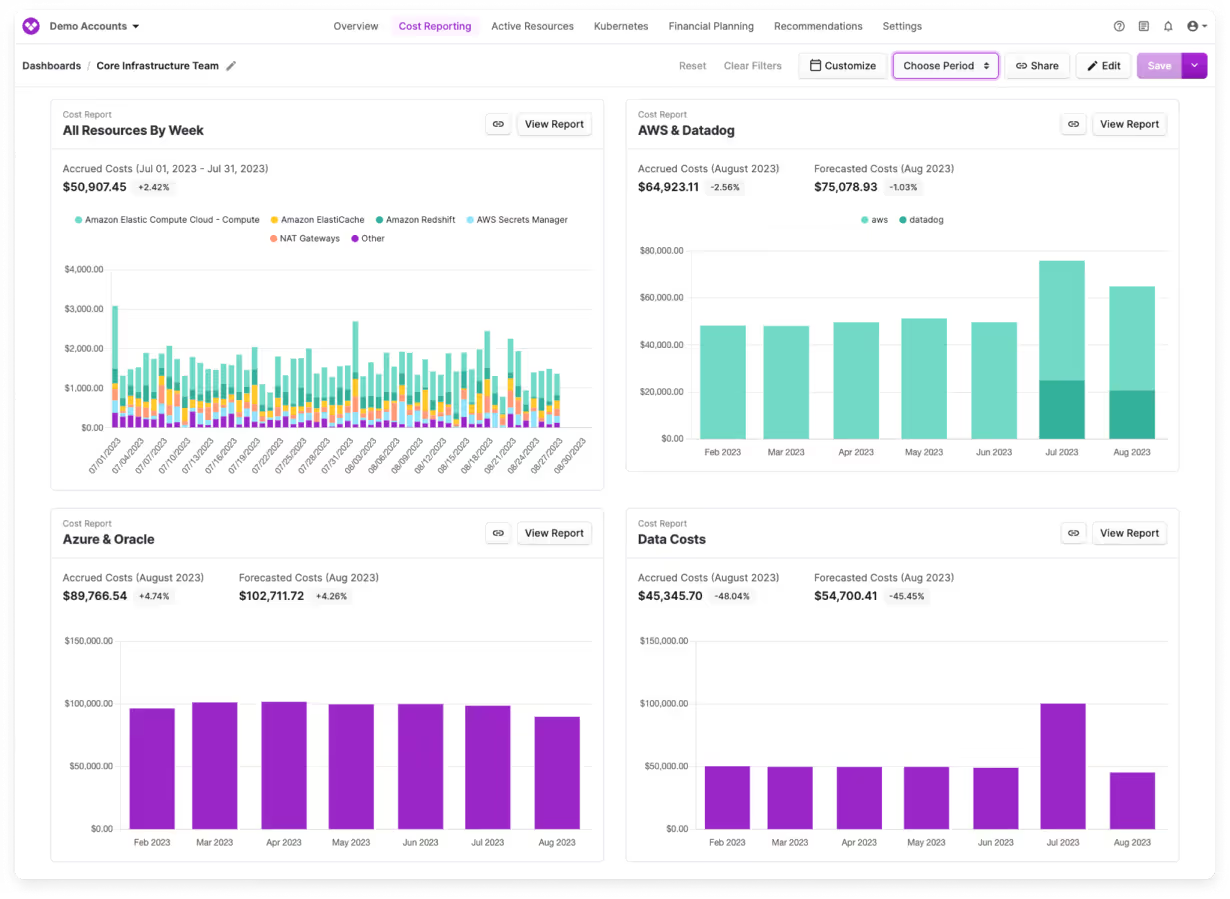
Vantage is a cloud observability and optimization platform that consolidates cloud infrastructure costs from various providers, offering a unified view of total cloud spending.
It equips organizations with advanced tools for optimizing expenses and integrates FinOps workflows and cost governance to ensure efficient cloud management.
The Vantage platform is free, and premium services start at $30 per month. It offers customizable pricing options based on your specific needs.
Documentation: https://docs.vantage.sh/
API: https://vantage.readme.io/reference/general#api-reference-structure
Slack Community: https://vantage.sh/slack
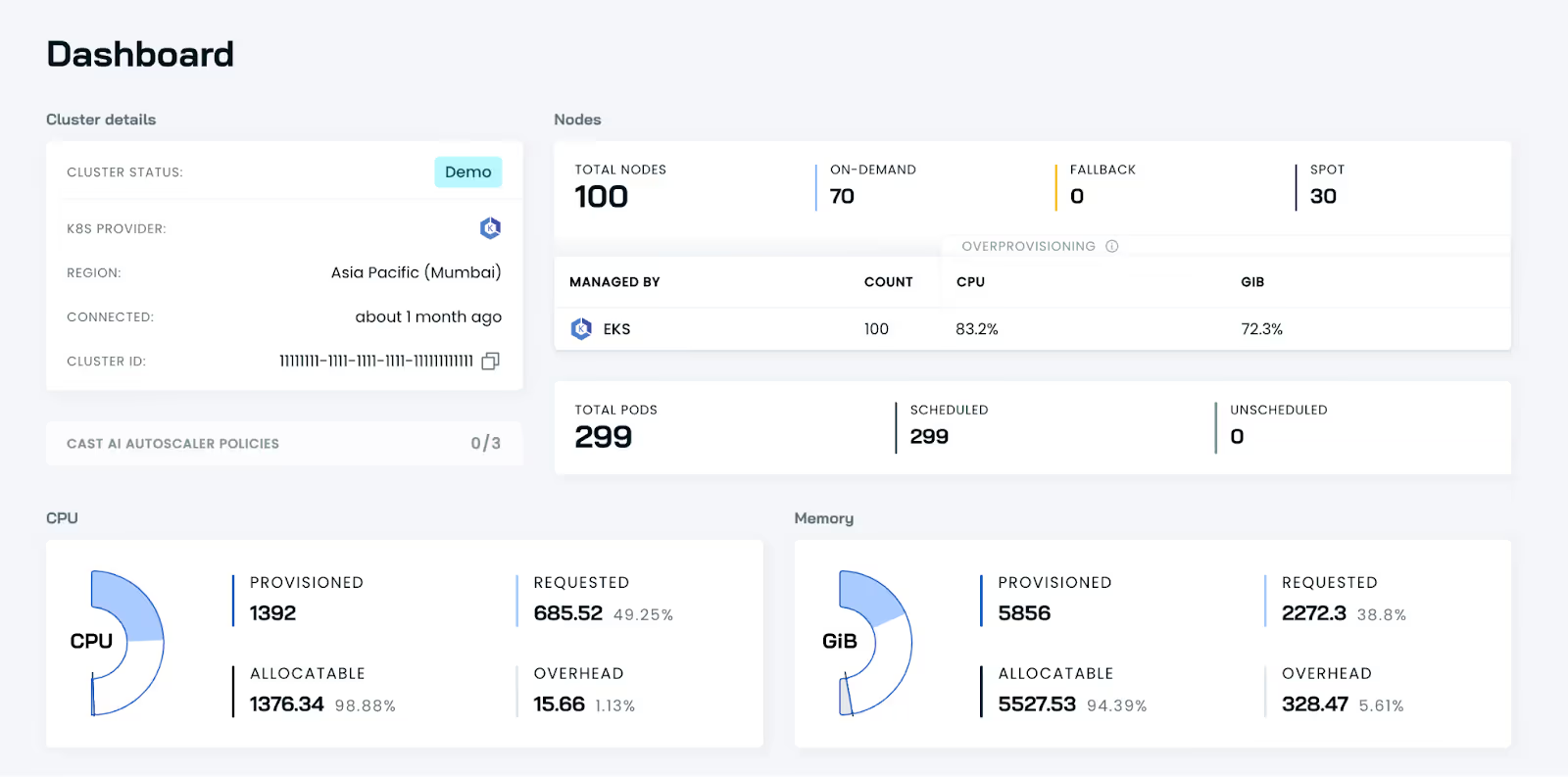
Cast.ai is a comprehensive platform designed for Kubernetes automation, optimization, security, and cost management. It simplifies the complexities specific to cloud providers, allowing seamless management of Kubernetes operations across GCP, AWS, and Azure.
The platform offers real-time and long-term cost monitoring at various levels, including cluster, namespace, and workload. It provides cost optimization recommendations and automates savings through features like autoscaling, spot instance automation, and bin packing.
Additionally, Cast.ai enhances security by analyzing your cluster’s configuration for potential vulnerabilities and misconfigurations, automatically prioritizing necessary fixes. It also allows you to scan your cluster against industry standards such as CIS Benchmarks, ensuring robust security compliance.
CAST AI offers a free plan with essential features, a Growth Plan at $99/month for advanced optimization and security, and custom pricing for enterprise-level needs.
Documentation: https://docs.cast.ai/docs/getting-started
Release Notes: https://cast.ai/release-notes/
Slack Community: https://join.slack.com/t/castai-community/shared_invite/zt-nwtbsbqq-dWOBiUgLtIGMsUSup7Xksw
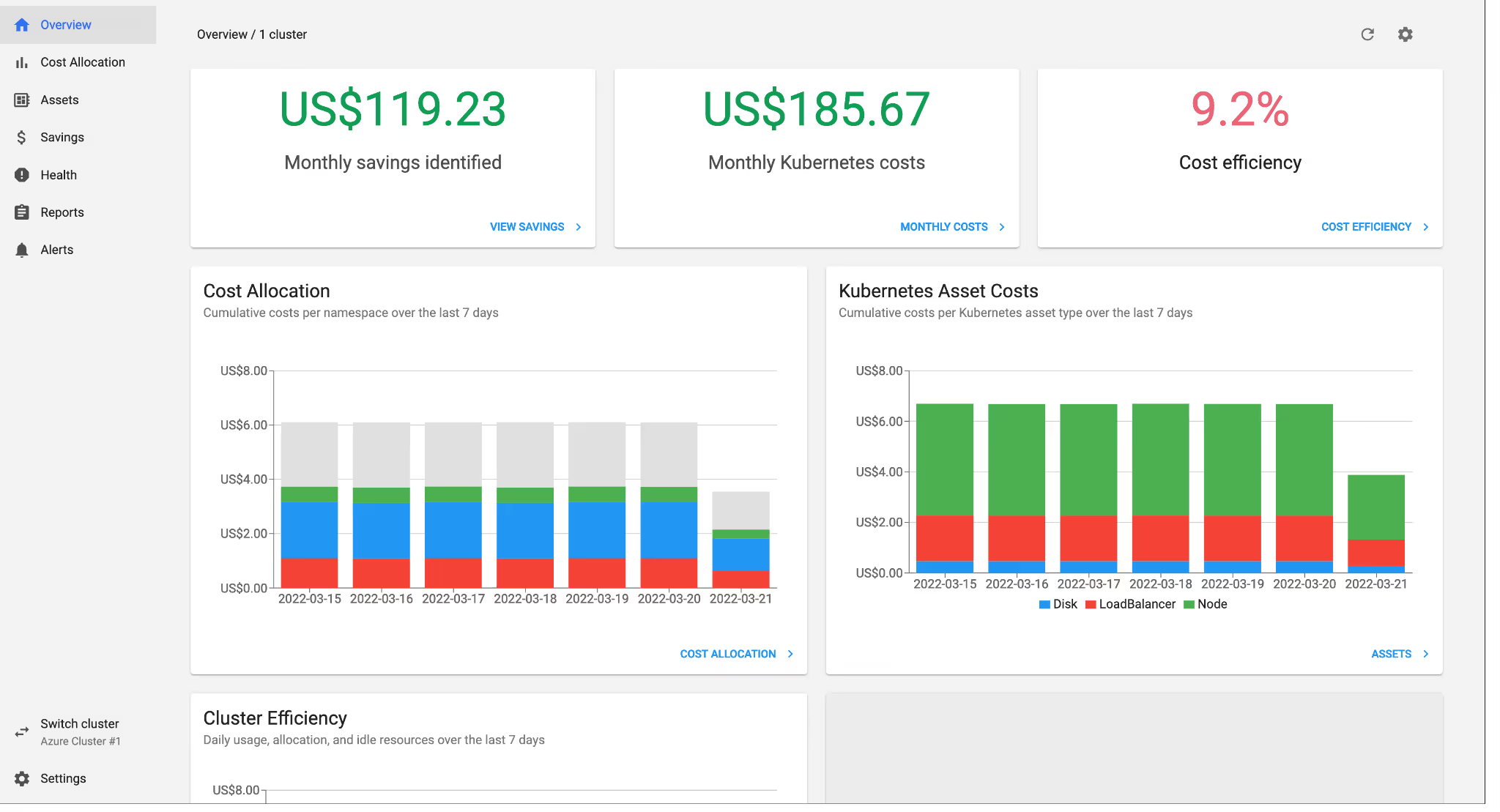
Similar to Cast AI, Kubecost is a powerful platform for monitoring and managing Kubernetes costs, offering continuous, real-time insights into your K8s cluster expenses. It consolidates Kubernetes cost data with other infrastructure and cloud service costs, providing a comprehensive view.
Kubecost also breaks down costs by Kubernetes elements like namespace, service, and deployment, and it allows you to track costs across multiple clusters. Additionally, it offers custom cost optimization recommendations that you can choose to implement.
Kubecost offers a free tier for up to 15 nodes, a Team plan starting at $449/month with advanced features, and custom pricing for enterprise-level needs.
Documentation: https://docs.kubecost.com/
Tutorials: https://docs.kubecost.com/install-and-configure/install/getting-started
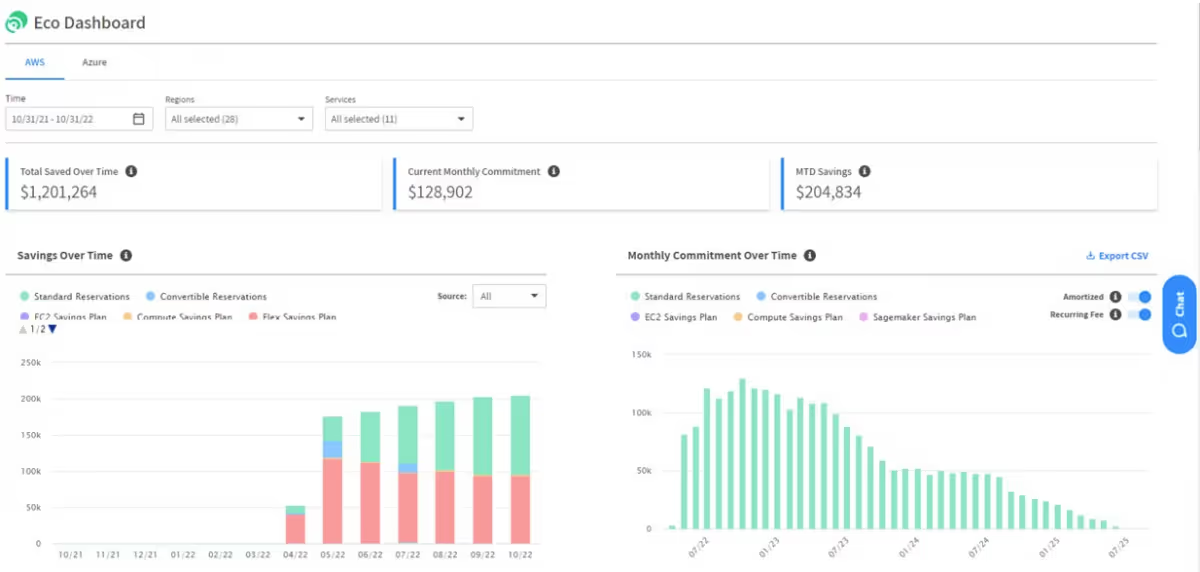
Spot by NetApp is a cloud cost management and optimization platform that uses machine learning to automatically manage cloud infrastructure, ensuring cost efficiency and resource optimization.
It focuses on leveraging spot instances, reserved instances, and savings plans to minimize cloud costs while maintaining application performance and availability.
Spot by NetApp typically operates on a percentage-of-savings pricing model, where you pay a portion of the savings the platform generates by optimizing your cloud resources. The exact pricing can vary based on your cloud usage and the specific features you need.
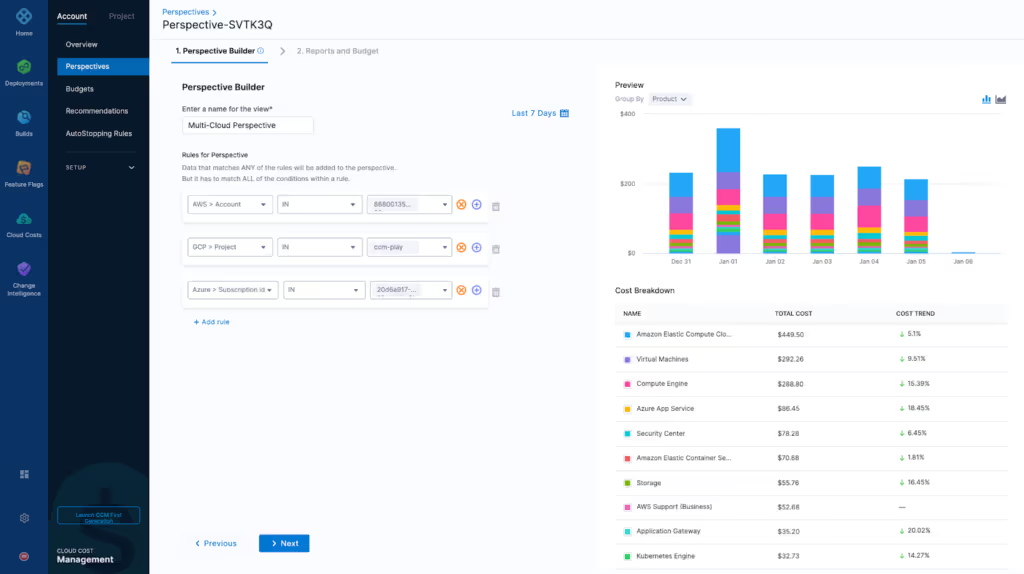
With Harness, you can monitor usage data hourly, including utilized, unallocated, and idle resources. While it doesn't directly link costs to specific features or projects like deployments, it does offer a solid context for cost reporting.
Additionally, Harness Cloud Cost Management includes features like cost anomaly detection and alerting, helping you quickly respond to potentially costly activities.
Cloud Cost Management offers a free plan with basic features, while advanced capabilities start with a Startup Plan, and custom pricing is available for enterprise needs.
Docs: https://developer.harness.io/docs/
API Documentation: https://www.harness.io/docs/api/
Community: https://developer.harness.io/community/
Developer Hub: https://developer.harness.io/
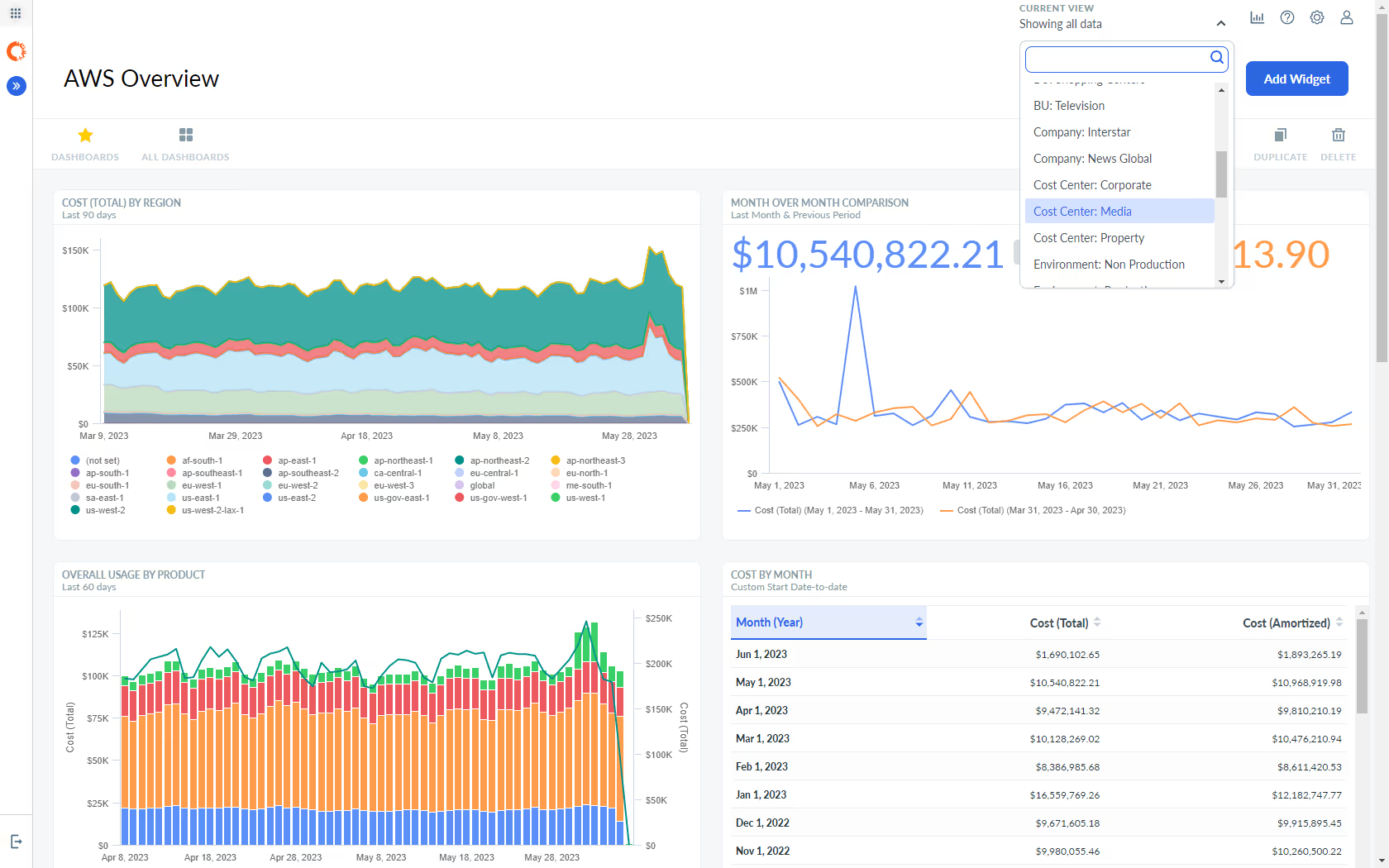
As a financial management tool, Apptio’s Cloudability is designed to monitor, report, and analyze cloud costs, offering features like budgeting, forecasting, and rightsizing.
Additionally, it enables planning for reserved instances, managing container costs, detecting anomalies, setting alerts, and identifying cost-saving opportunities. Cloudability also integrates with cloud monitoring tools like PageDuty and DataDog to deliver deeper insights into cloud expenses.
There is no estimate or indication of the pricing by Apptio Cloudability.
Community: https://www.apptio.com/resources/community/
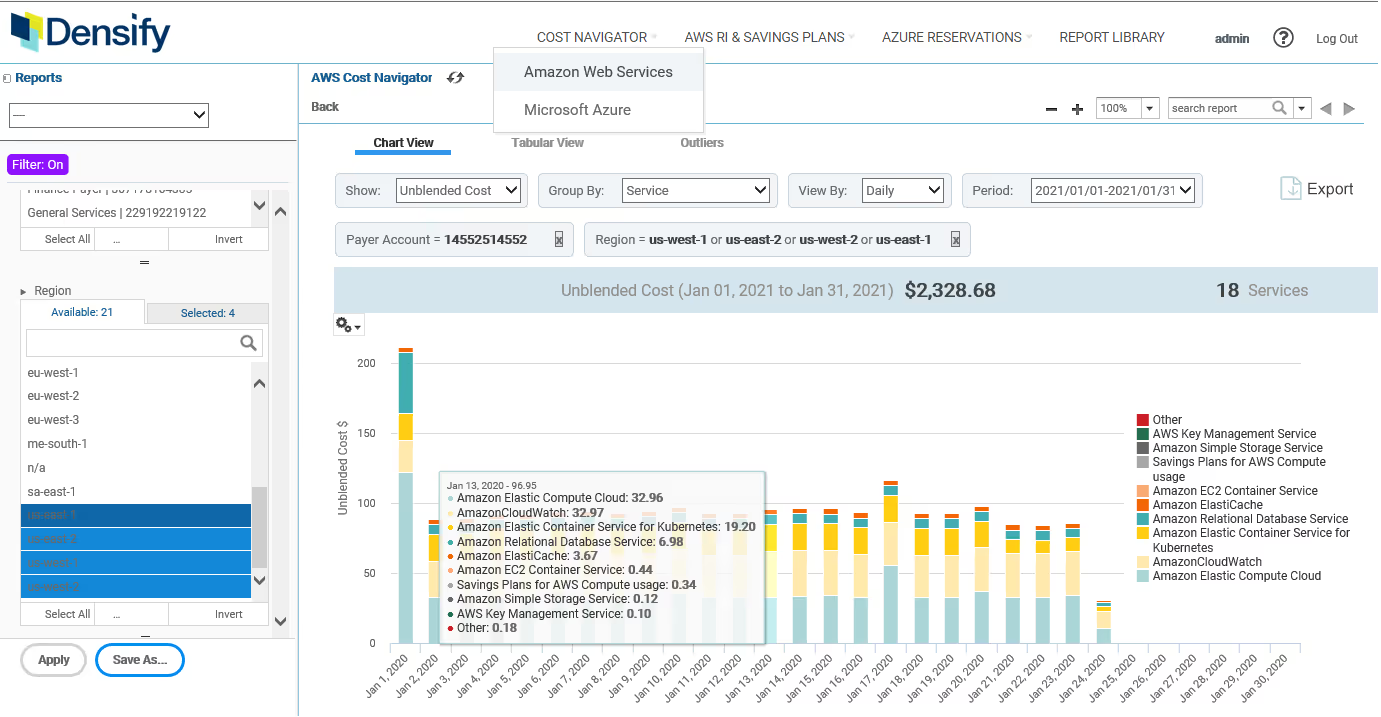
Densify's platform includes a cloud resource optimization tool that identifies cost-saving opportunities and strategies to reduce cloud computing expenses.
It also alerts you if you're over-allocating resources to instances or if you're using an inefficient instance type, helping you optimize your cloud resources effectively.
There is no estimate or indication of the pricing by Densify.
Documentation and Training: https://www.densify.com/docs-landing/

AWS Cost Explorer offers an intuitive interface that allows you to visualize, comprehend, and manage your AWS costs and usage over time. You can quickly start by creating custom reports to analyze cost and usage data.
The tool enables you to review your data at a high level, such as total costs and usage across all accounts, or delve deeper into your data to identify trends, pinpoint cost drivers, and detect anomalies.
AWS Cost Explorer is free to use with basic features, including viewing up to 12 months of data. Advanced features like the API or accessing data older than 12 months may incur charges based on usage.
Amazon EC2: https://docs.aws.amazon.com/ec2/index.html?nc2=h_ql_doc_ec2
Amazon Simple Storage Service: https://docs.aws.amazon.com/s3/index.html?nc2=h_ql_doc_s3
AWS CLI: https://docs.aws.amazon.com/cli/index.html?nc2=h_ql_doc_cli
Amazon CloudFront: https://docs.aws.amazon.com/cloudfront/index.html?nc2=h_ql_doc_cf
AWS Identity and Access Management: https://docs.aws.amazon.com/iam/index.html?nc2=h_ql_doc_iam
Amazon RDS: https://docs.aws.amazon.com/rds/index.html?nc2=h_ql_doc_rds
Product and Technical FAQ: https://aws.amazon.com/faqs/?nc1=f_dr
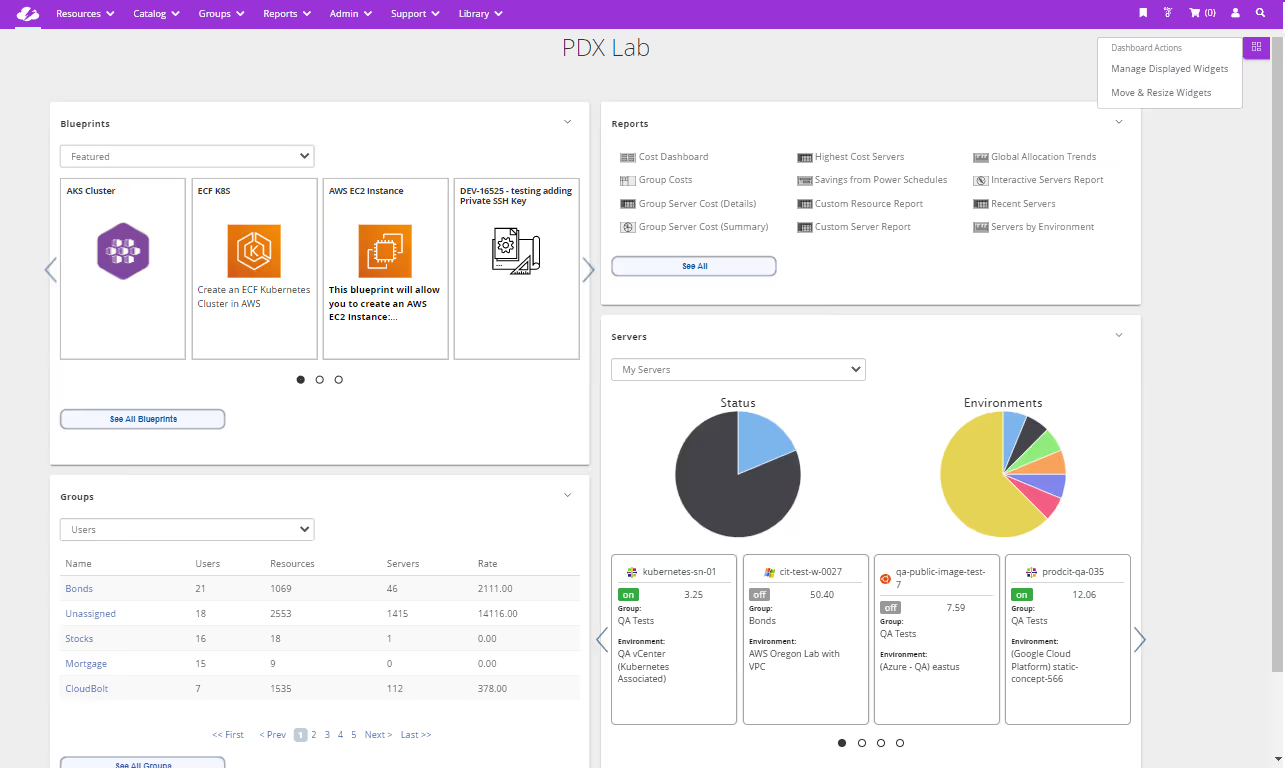
CloudBolt offers a range of traditional cloud financial management tools, including identifying idle or unused resources, rightsizing opportunities, reserved instance management, and providing automated savings recommendations.
It enables you to secure discounted rates on cloud resources and goes a step further by automating cloud cost optimization actions based on policies you set in advance.
Additionally, CloudBolt allows for detailed cost allocation by factors such as owner, environment, and business unit. It also supports analysis across Kubernetes, on-premises (self-hosted), and multi-cloud environments, making it a versatile tool for managing cloud costs effectively.
CloudBolt's pricing typically depends on the specific needs and scale of your organization, as it offers customized pricing based on the features and levels of service you require.
Resources: https://www.cloudbolt.io/resources/?load=all
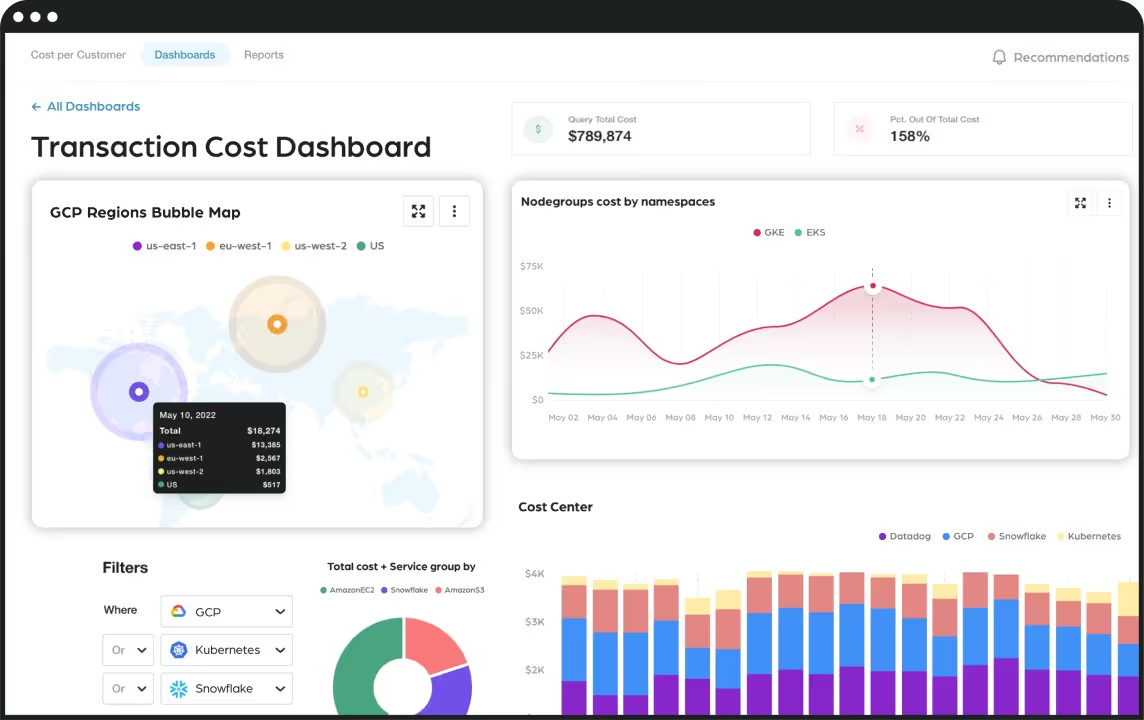
Finout offers deeper cloud spending analysis than native tools like Cost Explorer and Azure Cost Management + Billing. With customizable dashboards and reports, you can break down costs by cost center, namespace, and more. It also lets you set custom alerts to notify your team when usage hits specific thresholds. As a multi-cloud platform, Finout provides a unified view of costs across major cloud providers like AWS and GCP, as well as platforms such as Kubernetes, Snowflake, and Databricks, offering comprehensive insights into your cloud spending.
Finout offers customized pricing based on your specific needs.
Documentations: https://docs.finout.io/en
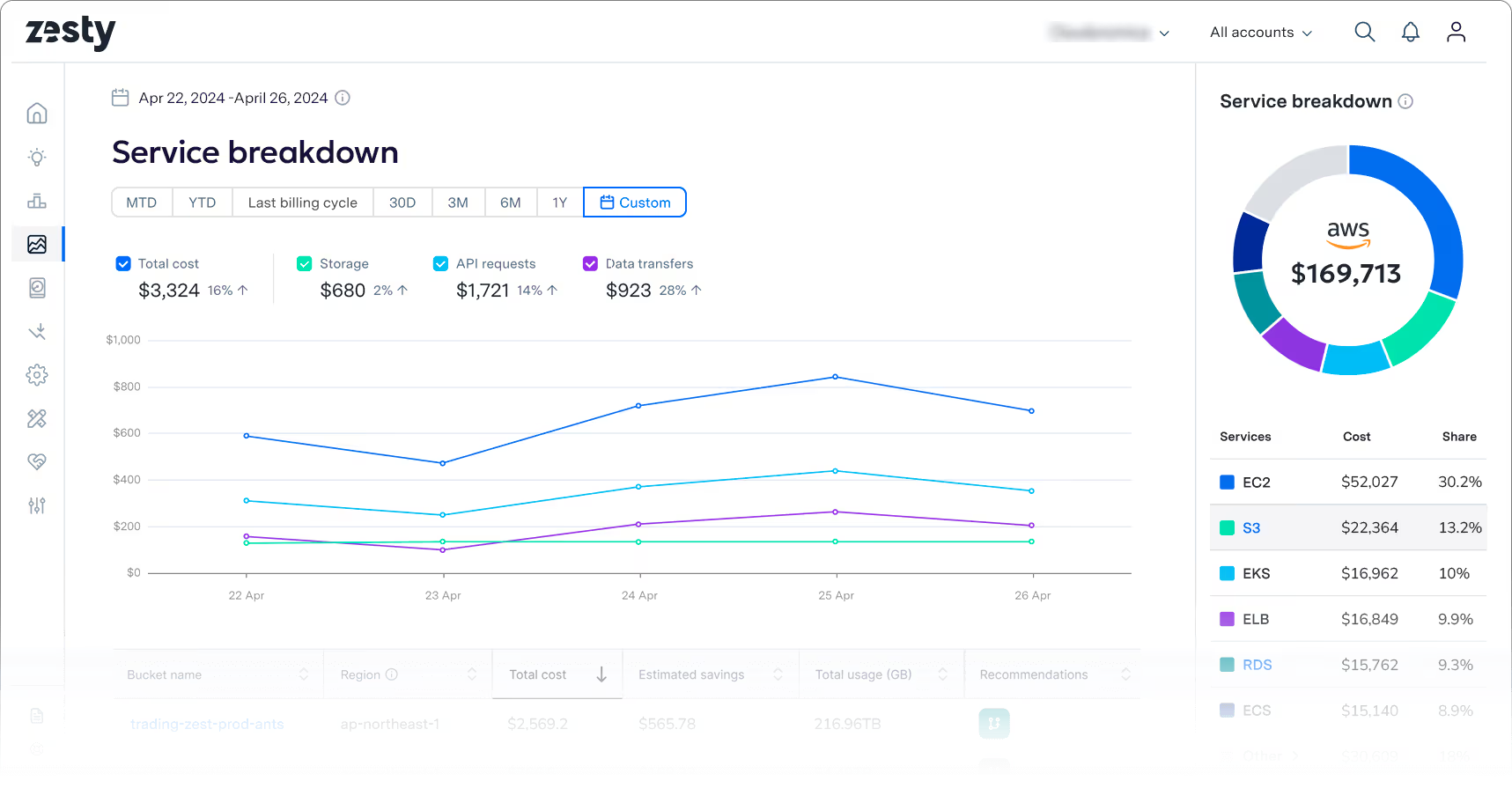
Zesty’s cloud cost management technology allows you to optimize cloud usage and reduce costs. Initially designed as a storage optimization tool, it has since expanded to include commitment discount optimization through Zesty Commitment Manager. Currently available for AWS users, Zesty automates the buying and selling of AWS Reserved Instances (RIs) to match real-time application needs. Additionally, it optimizes costs by dynamically adjusting disk capacity with Zesty Disk, either expanding or shrinking it based on actual usage demands.
Zesty offers customized pricing tailored to your specific needs. The pricing is designed to scale with your usage and the particular features you require.
Reports and WhitePapers: https://zesty.co/resources/reports-whitepapers/
Cloud cost management is crucial as cloud spending surges globally. For those just starting, tools like AWS Cost Explorer, Finout, or Kubecost offer essential cost visibility and basic optimization features. These are ideal for smaller setups.
For more advanced needs, platforms like CAST AI, Spot by NetApp, or Zesty automate cost-saving processes and provide deep insights across multi-cloud environments, making them suitable for growing businesses with complex infrastructure.
For enterprise-level solutions, CloudBolt, Densify, or Apptio’s Cloudability offer comprehensive cost management, detailed budgeting, and multi-cloud analysis, perfect for large organizations needing extensive integration and customization.
Choosing the right tool depends on your specific cloud usage, complexity, and budget, with each platform offering distinct strengths.
Try Doctor Droid — your AI SRE that auto-triages alerts, debugs issues, and finds the root cause for you.
(Perfect for DevOps & SREs)

Install our free slack app for AI investigation that reduce alert noise - ship with fewer 2 AM pings
Everything you need to know about Doctor Droid
Cloud cost management is the process of monitoring, controlling, and optimizing your cloud spending across various services and providers. It's important because cloud costs can quickly escalate without proper oversight, especially as cloud usage grows. With worldwide cloud spending projected to reach $597.3 billion in 2023, implementing effective cost management strategies helps organizations avoid unnecessary expenses and ensure they're getting maximum value from their cloud investments.
You likely need a cloud cost management platform if you're experiencing unexpected cloud bills, have multi-cloud or complex cloud environments, lack visibility into your cloud spending, or are concerned that you might be paying for underutilized resources. Even small to medium organizations can benefit from basic cost management tools to establish good cloud financial practices early.
Look for features such as cost visibility and reporting, cost allocation and tagging, anomaly detection, budget alerts, optimization recommendations, automated cost-saving actions, multi-cloud support (if applicable), and integration with your existing tools. The right combination of features will depend on your organization's size and cloud complexity.
For those just starting with cloud cost management, tools like AWS Cost Explorer, Finout, or Kubecost offer essential visibility and basic optimization features without overwhelming complexity. These tools provide foundational cost monitoring capabilities that are ideal for smaller setups or teams new to cloud cost optimization.
Enterprise organizations typically benefit from comprehensive solutions like CloudBolt, Densify, or Apptio's Cloudability. These platforms offer advanced features including detailed budgeting, governance controls, multi-cloud analysis, extensive integration capabilities, and customization options that align with the complex needs of large organizations.
Yes, many advanced platforms like CAST AI, Spot by NetApp, and Zesty offer automation capabilities that can automatically adjust resources based on actual usage, implement scheduling for non-production workloads, and apply discounted pricing options. These automated actions can significantly reduce cloud costs without requiring constant manual intervention.
Most sophisticated cloud cost management platforms provide unified dashboards that aggregate data across multiple cloud providers (AWS, Azure, Google Cloud, etc.). This gives you a comprehensive view of your entire cloud spend, allows for cross-cloud comparisons, and helps identify opportunities for optimization across your entire cloud portfolio.
Organizations typically see a 20-30% reduction in cloud costs after implementing proper cost management practices and tools. However, the exact ROI depends on your current cloud usage efficiency, the complexity of your environment, and how effectively you implement the recommended optimizations. Most platforms can quickly pay for themselves through the cost savings they enable.
Dr. Droid can be self-hosted or run in our secure cloud setup. We are very conscious of the security aspects of the platform. Read more about security & privacy in our platform here.
Dr. Droid can be self-hosted or run in our secure cloud setup. We are very conscious of the security aspects of the platform. Read more about security & privacy in our platform here.


